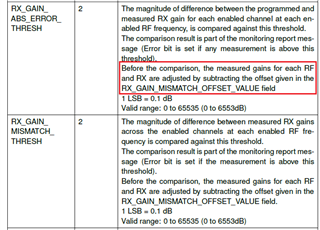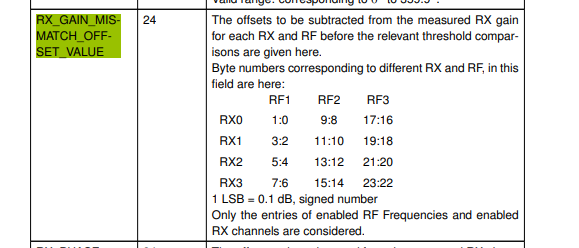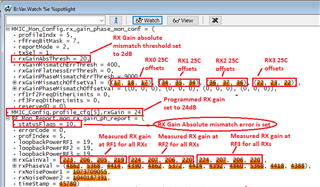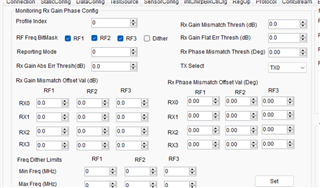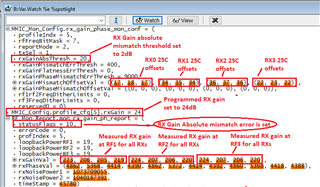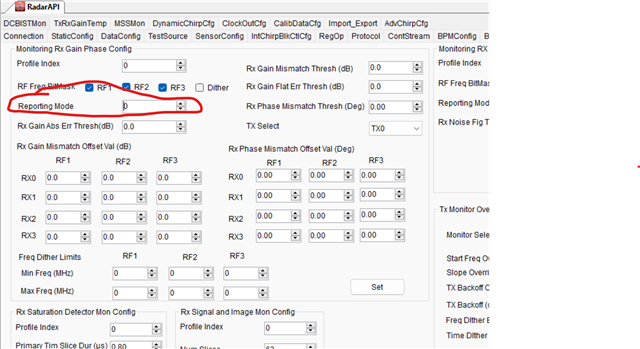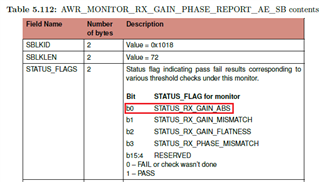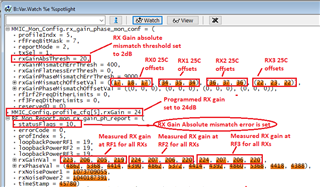Tool/software:
The following figure is taken from TI monitoring application note (SPRACW7A) and I'm trying to understand the math that's used to generate the "25C Zeroed Out Gain Mismatch vs Temp "
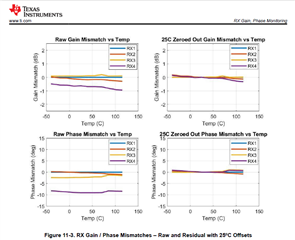
As far as I understand, the math for computing the Rx Gain absolute error per Rx channel is : | (measured Rx Gain of the channel - T0 Rx Gain of the channel) - Programmed Rx Gain |
but, this math doesn't seem to add up to the figure shown above and I've tried to explain this using an example below.
Programmed Rx Gain = 24dB.
Measured Rx Gain of the channel at time T0 = 23dB.
Measured Rx Gain of the channel at a later time = 22.5dB.
So, as per my understanding, the Rx Gain absolute error in this case should be = | (22.5 - 23) - 24 | = 24.5dB. But the "25C Zeroed Out Gain Mismatch vs Temp " indicates that the error will be closer to 0 upon compensating using the T0 values, so please provide your comments on this.



